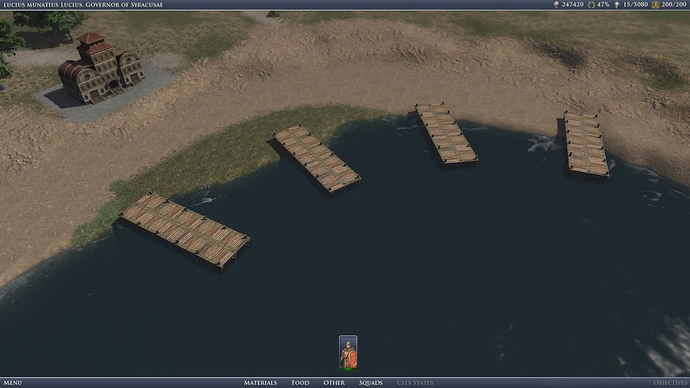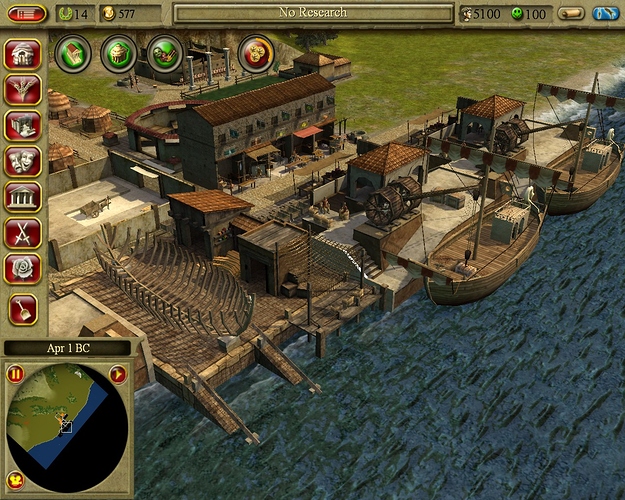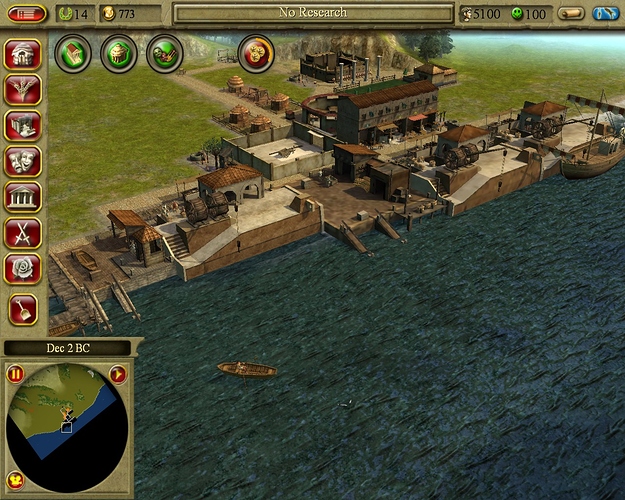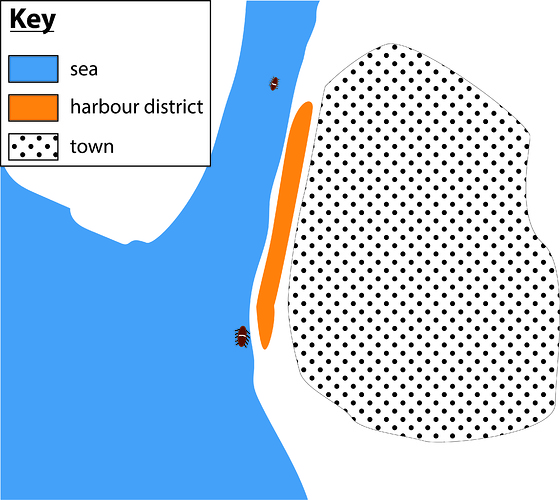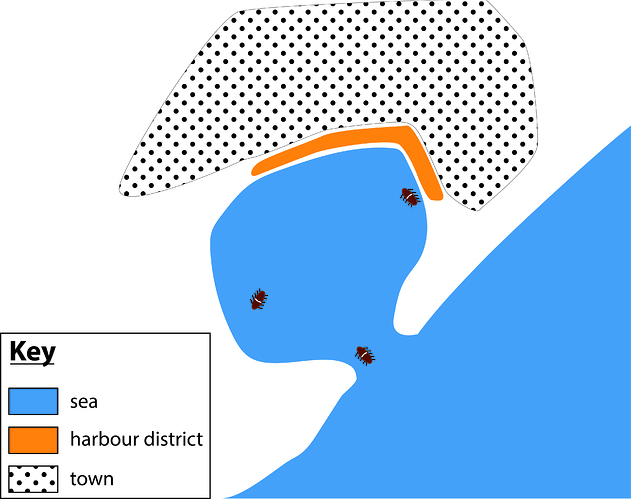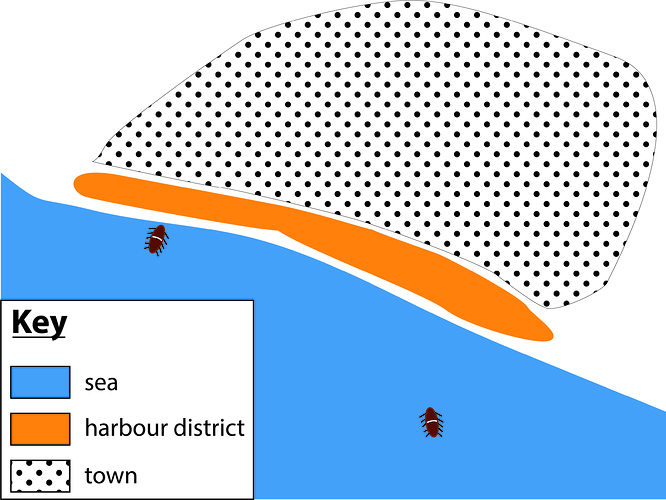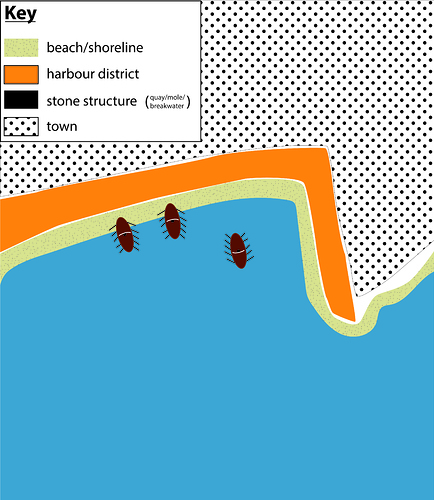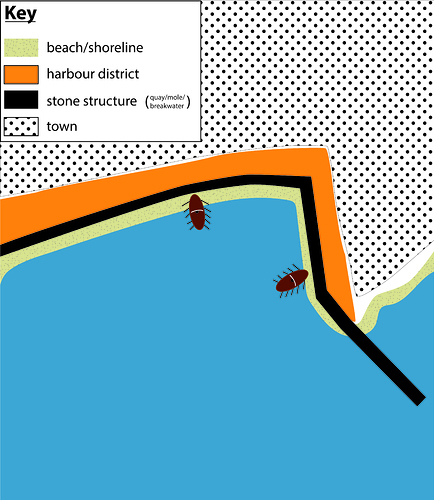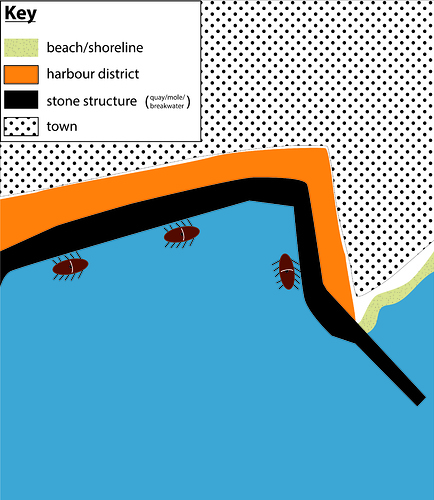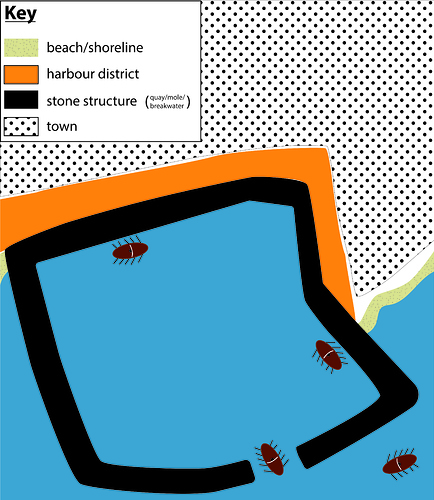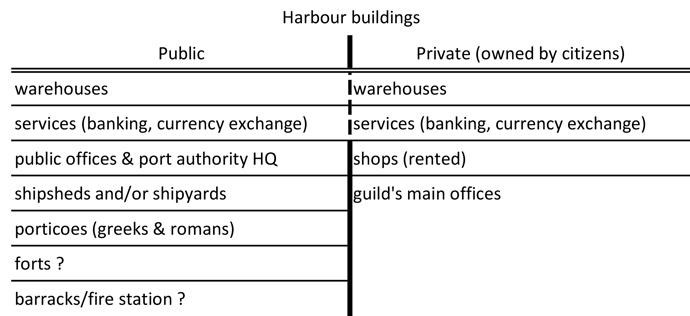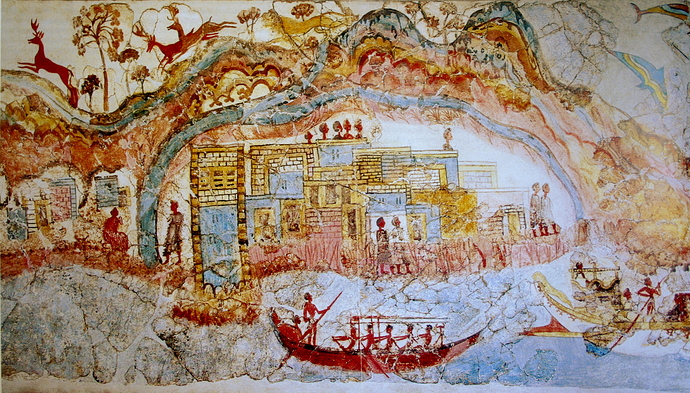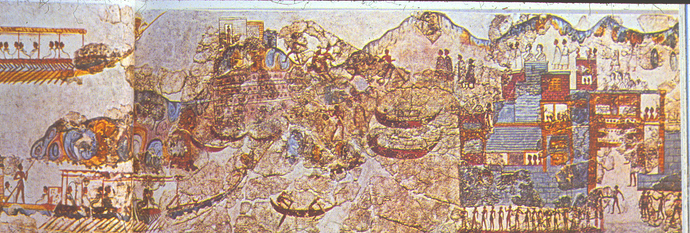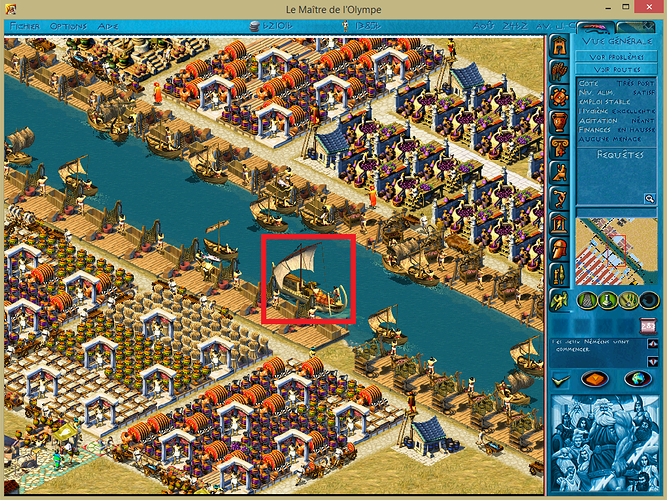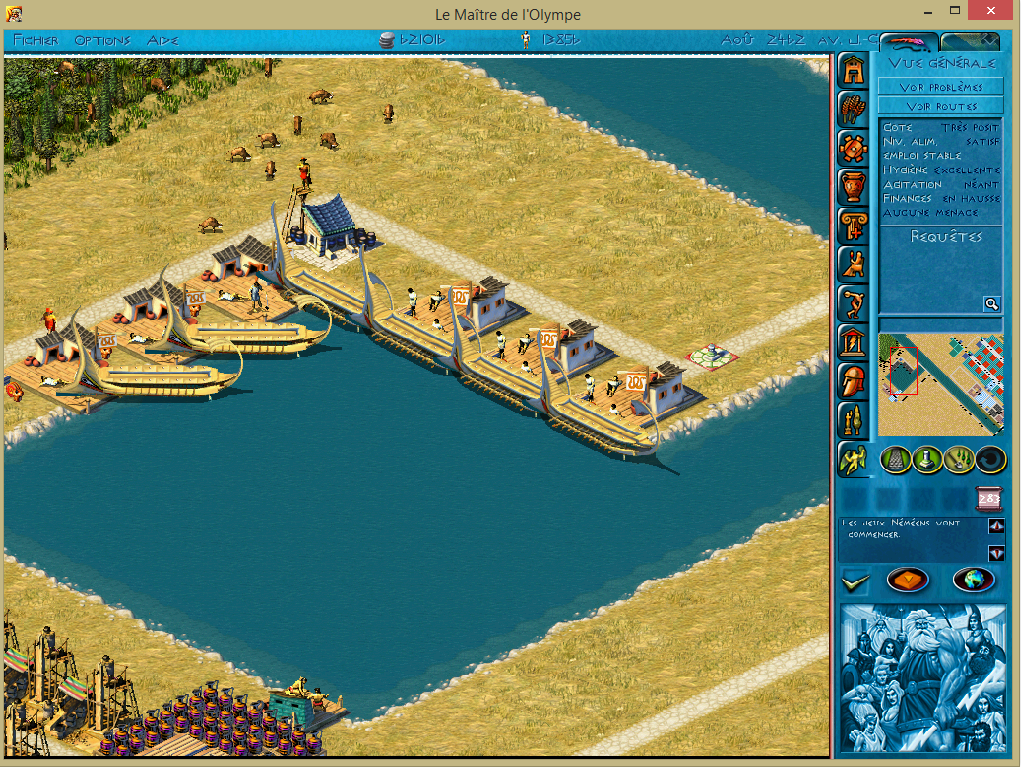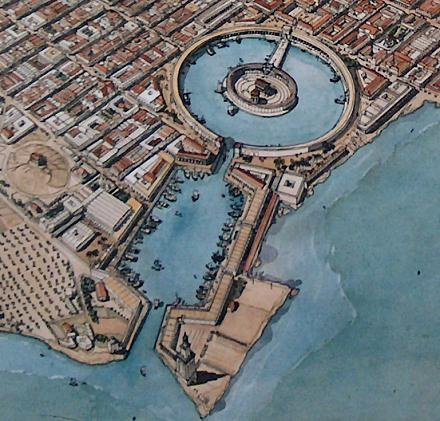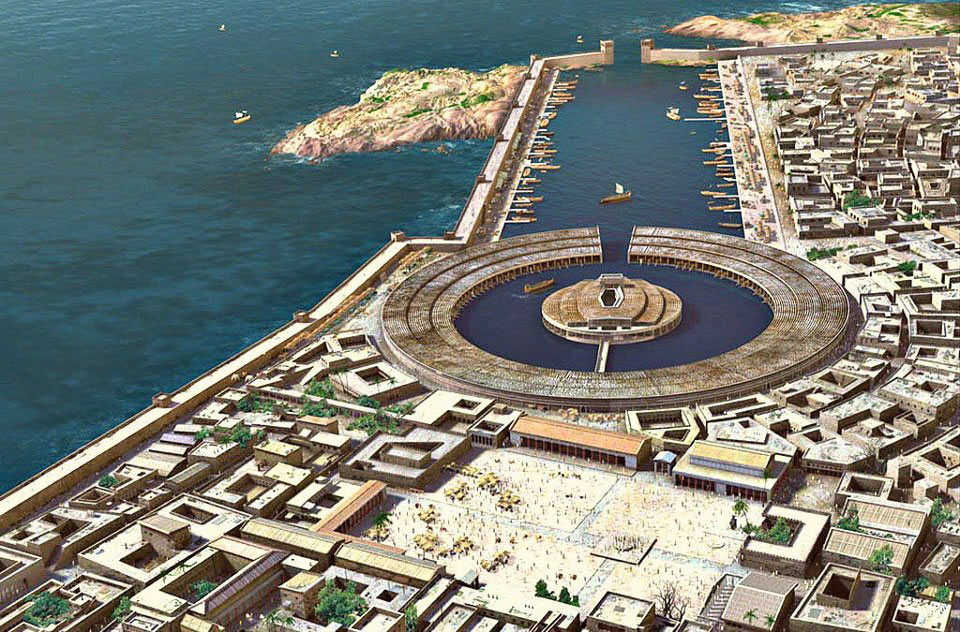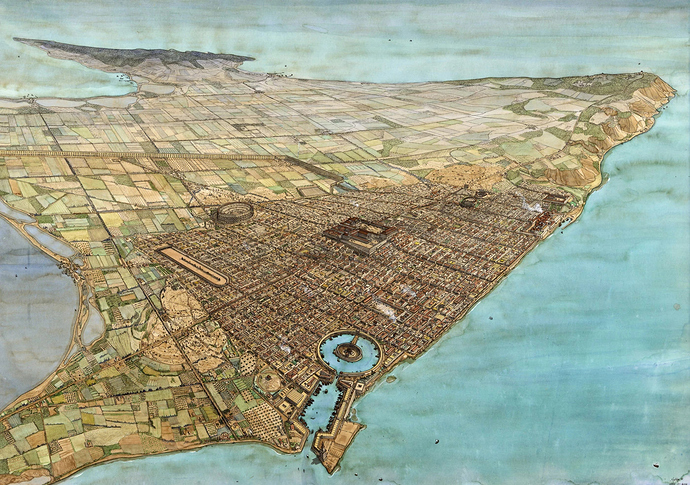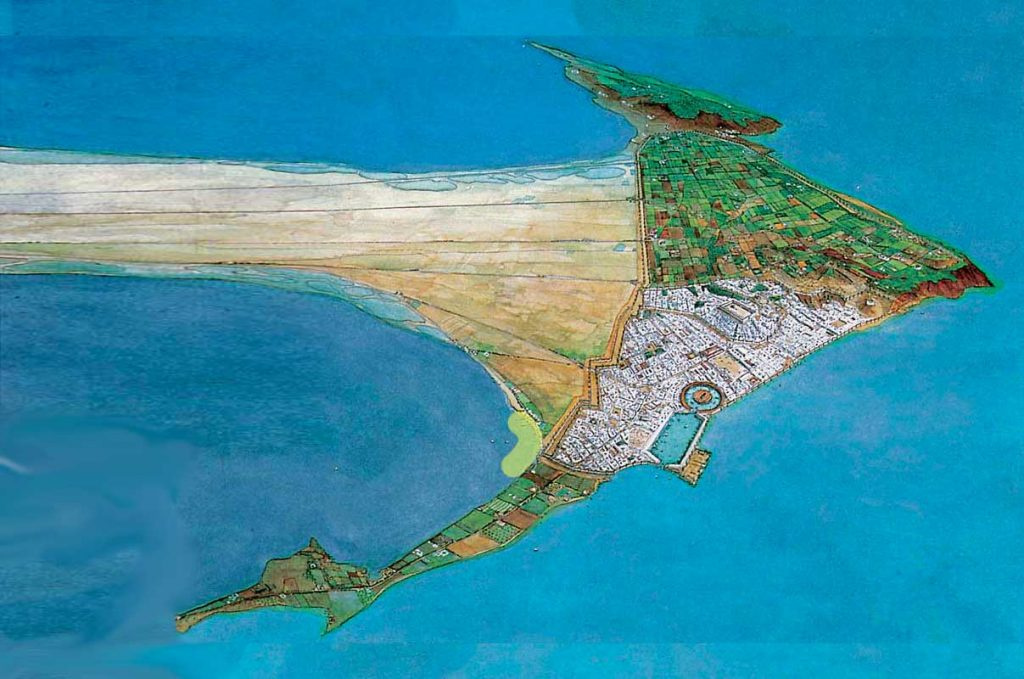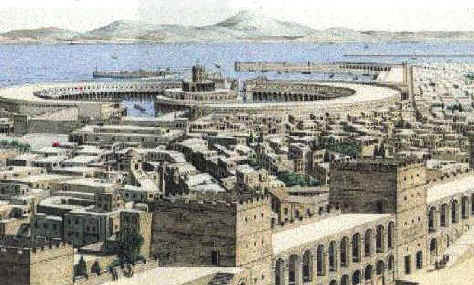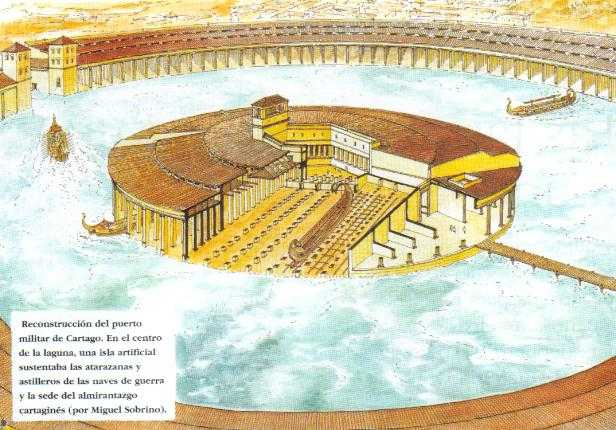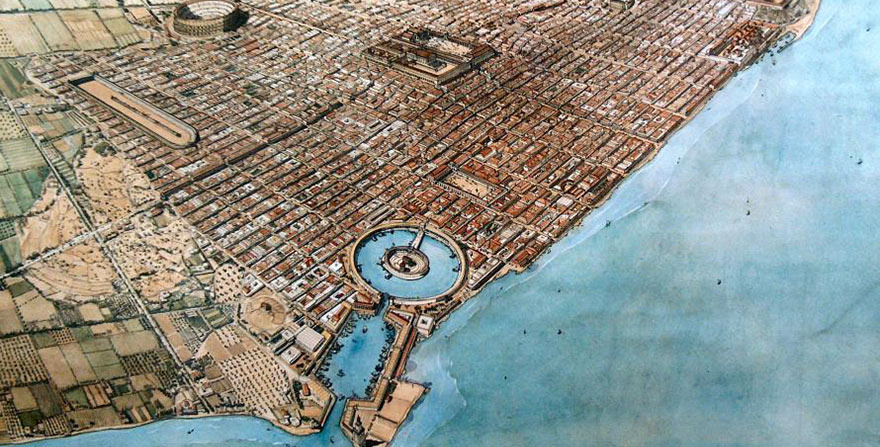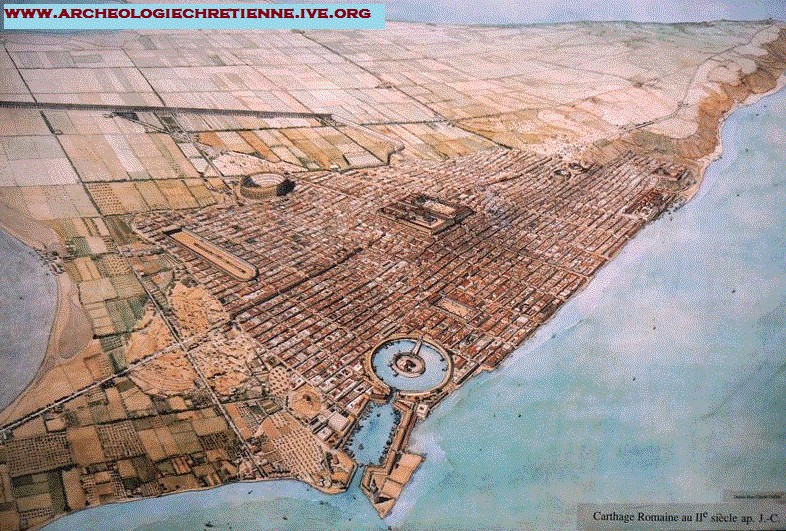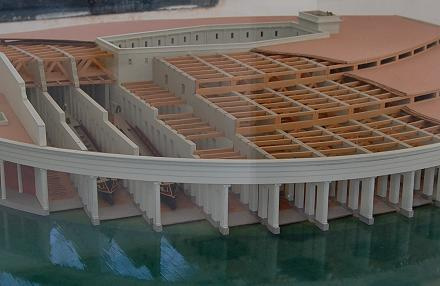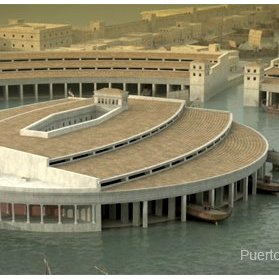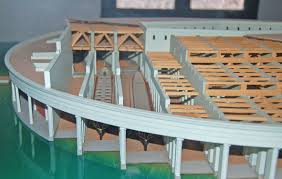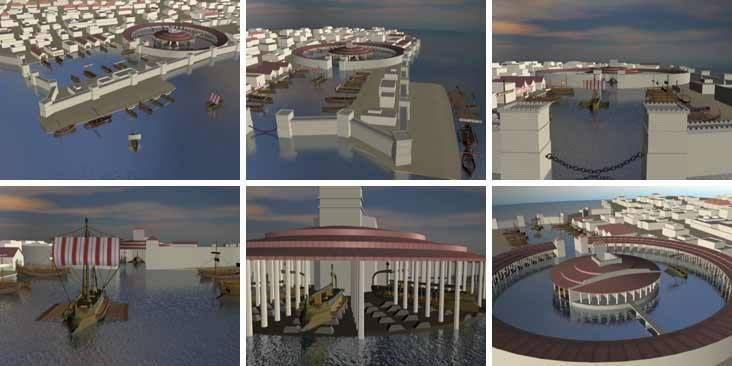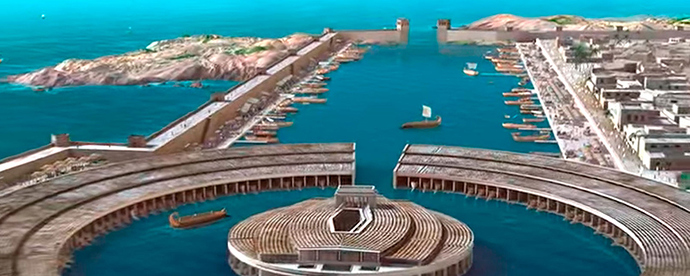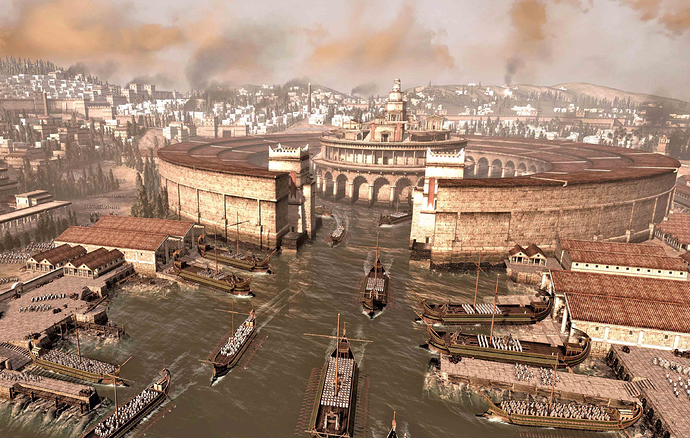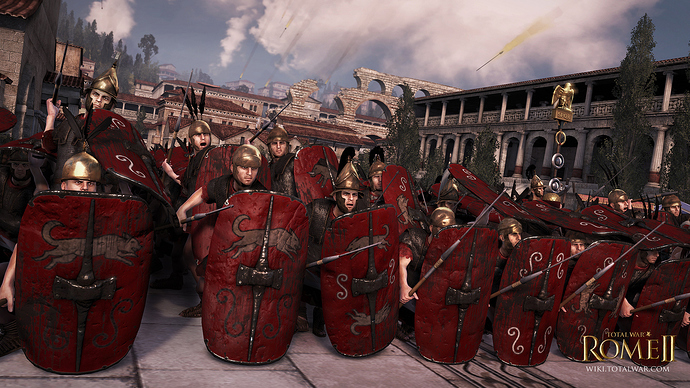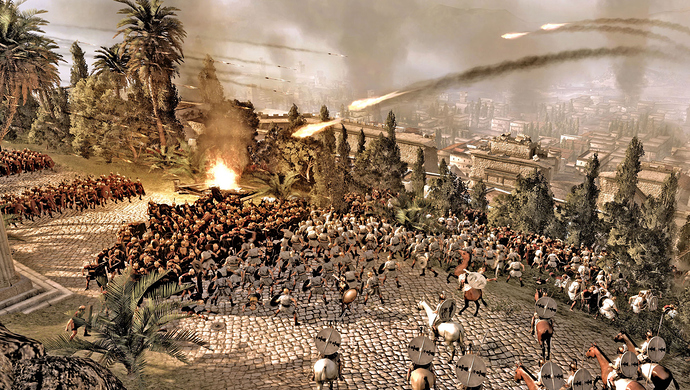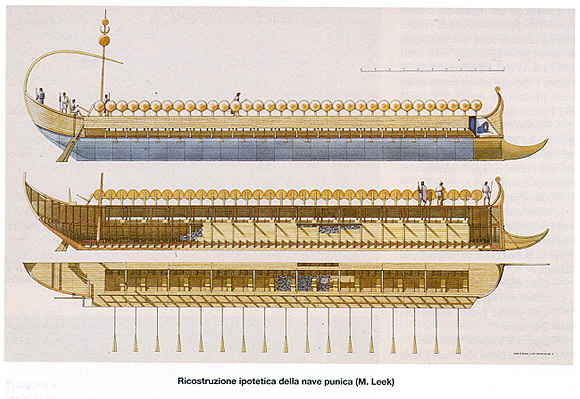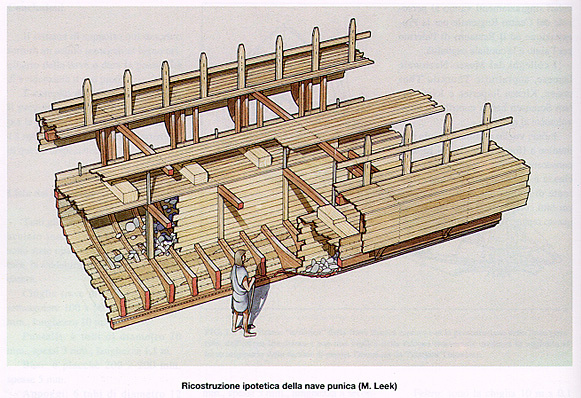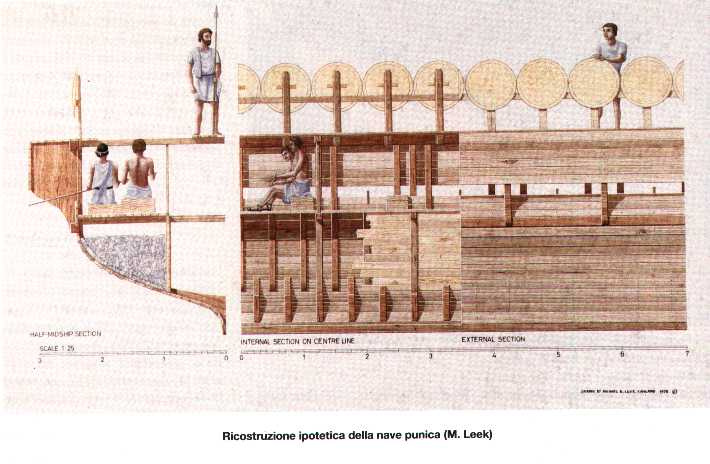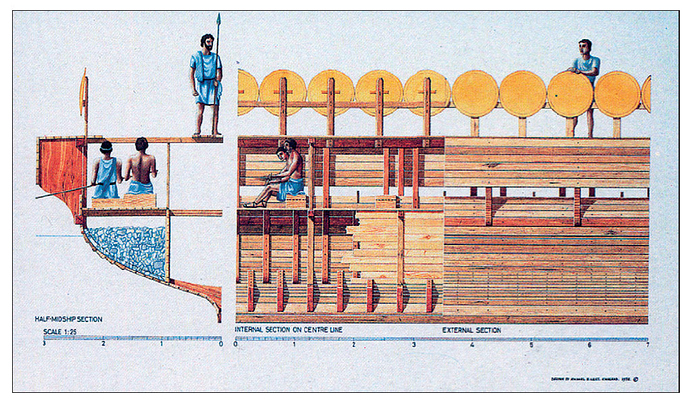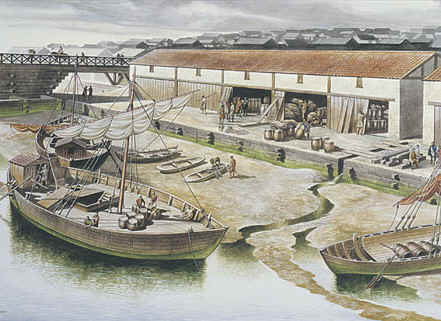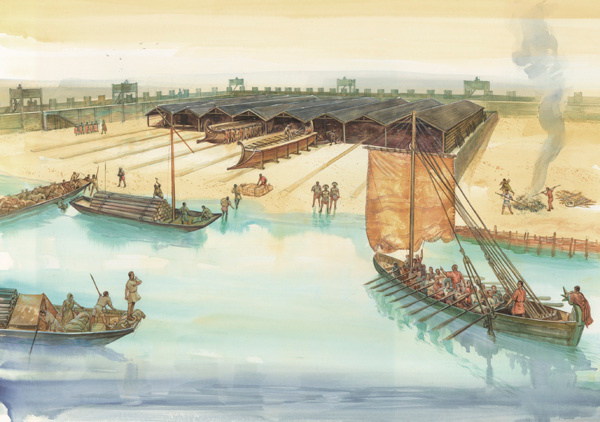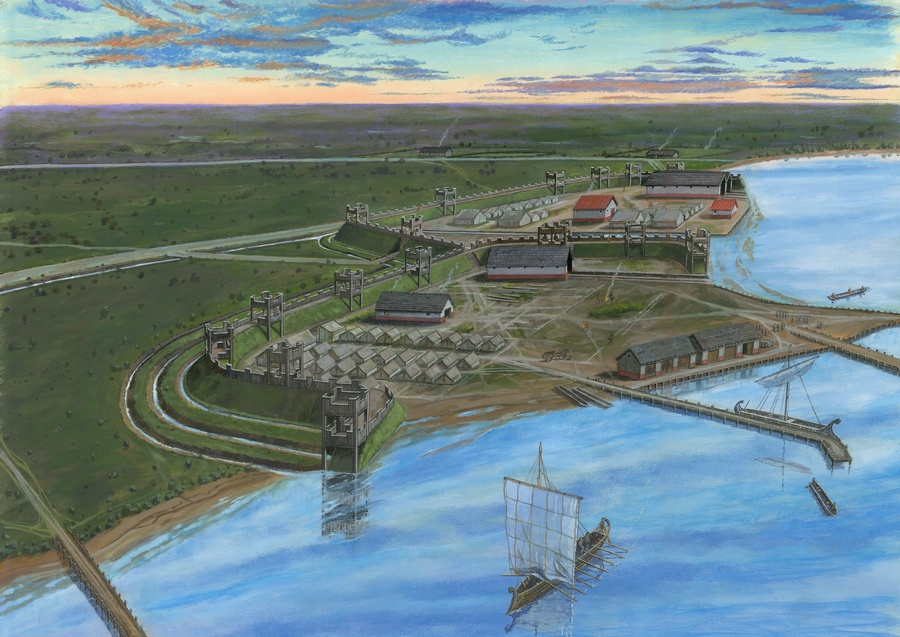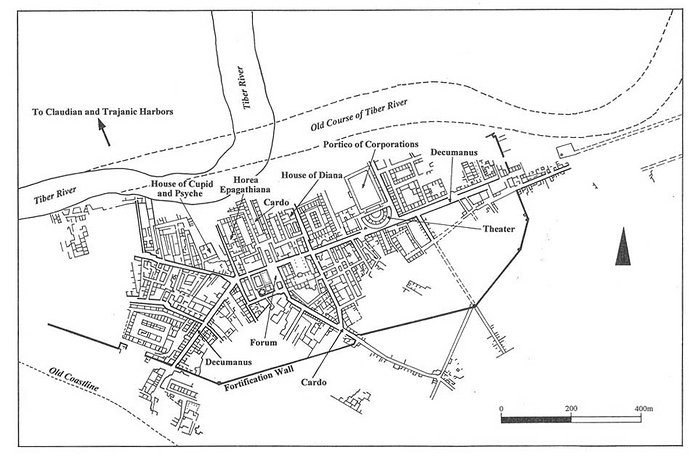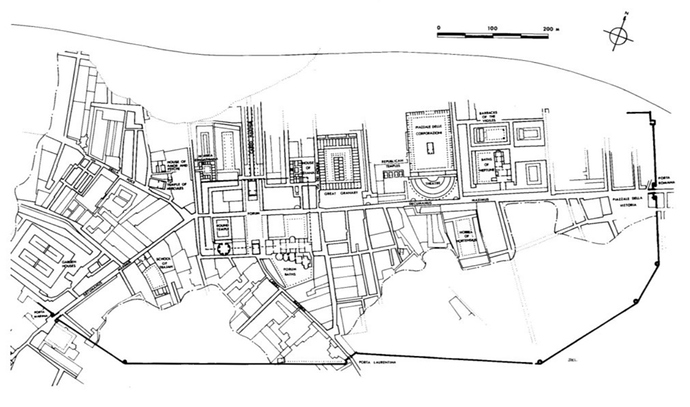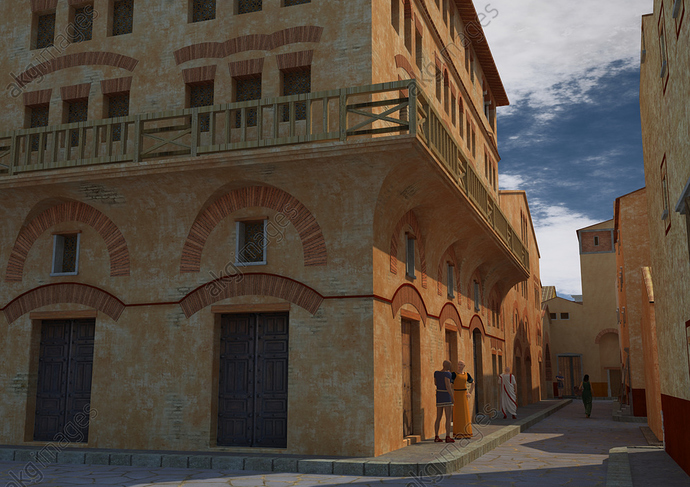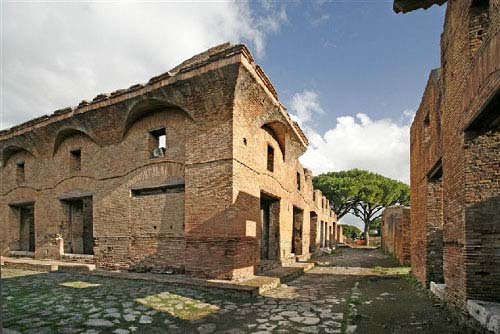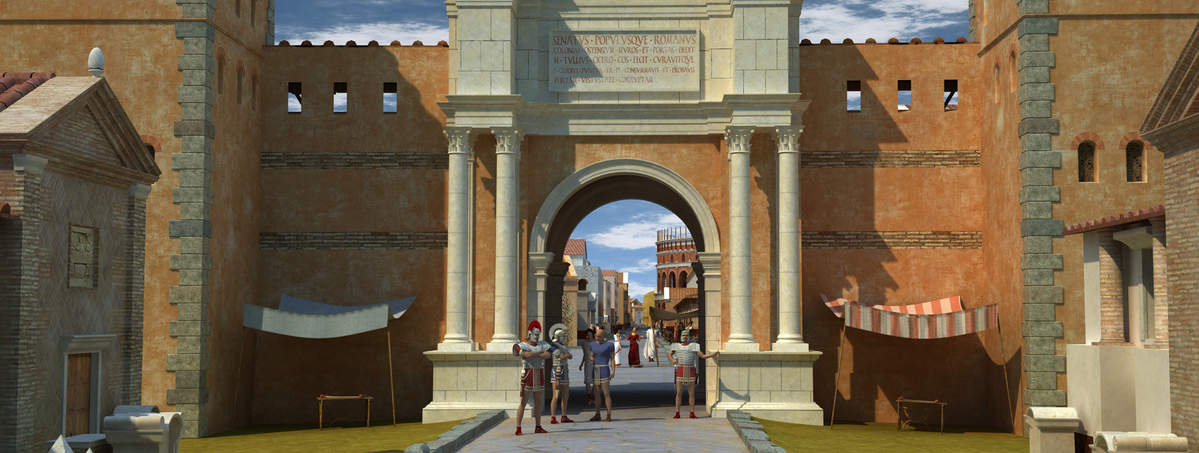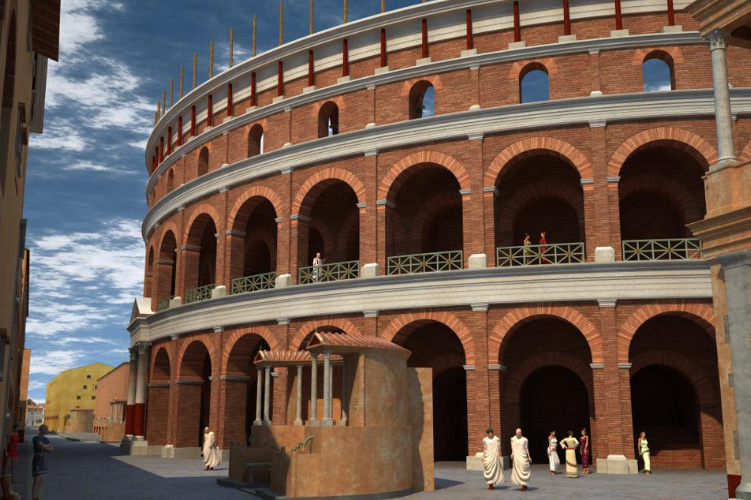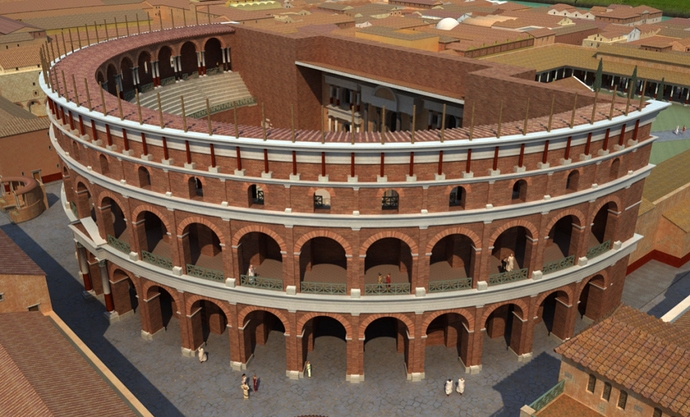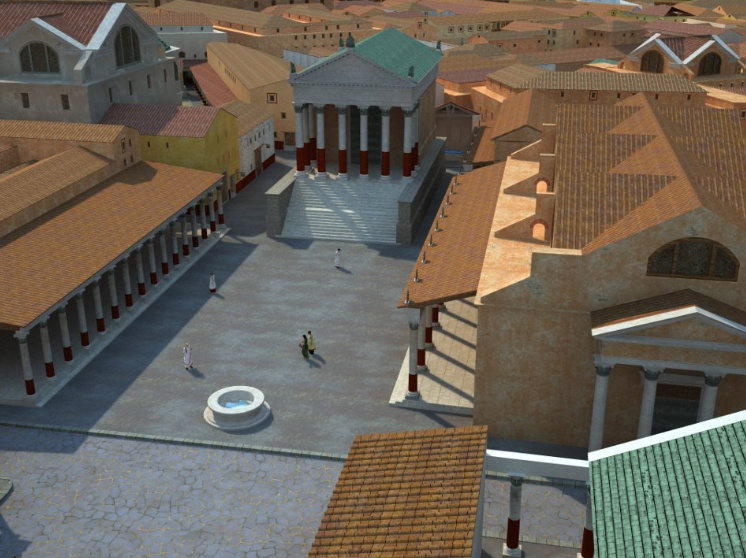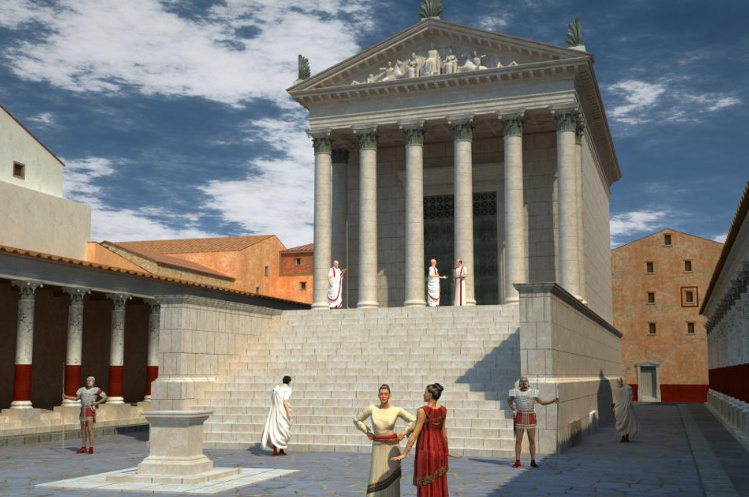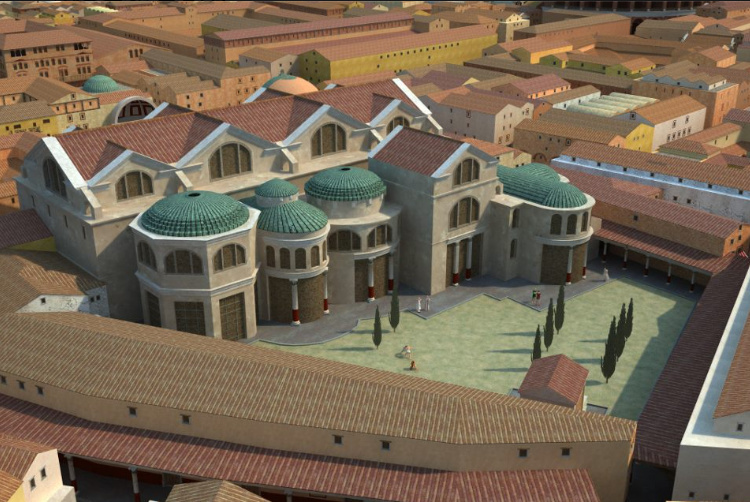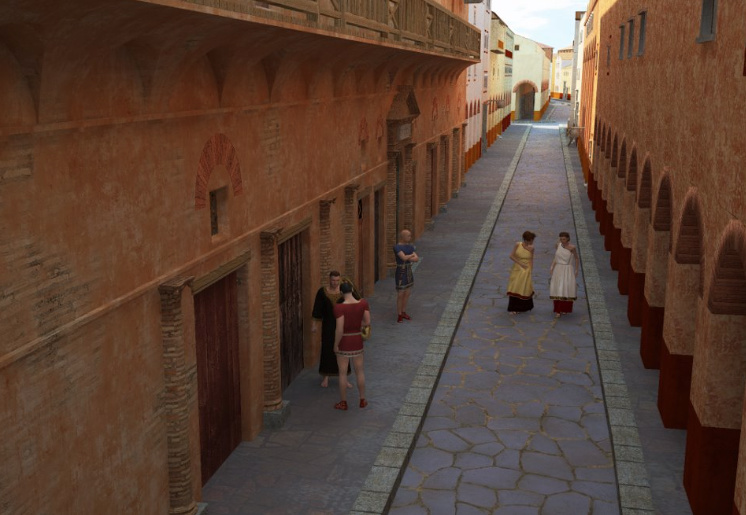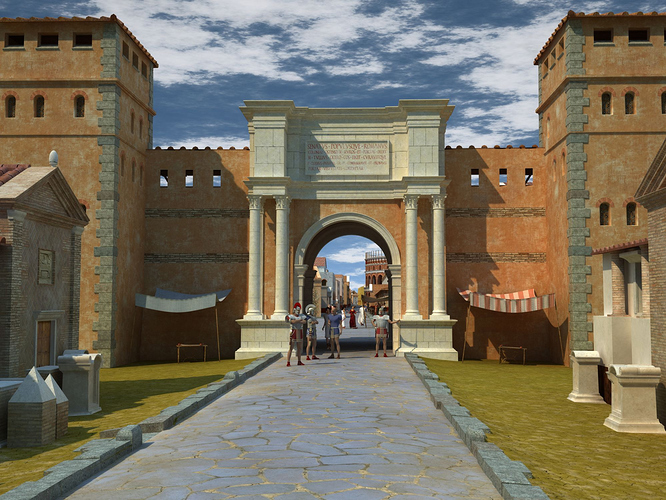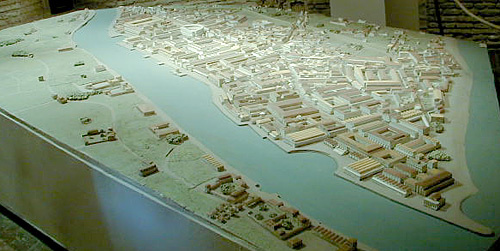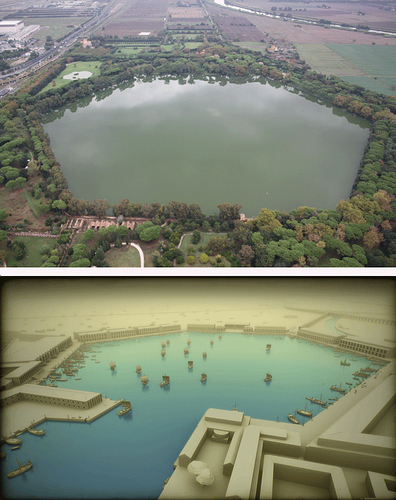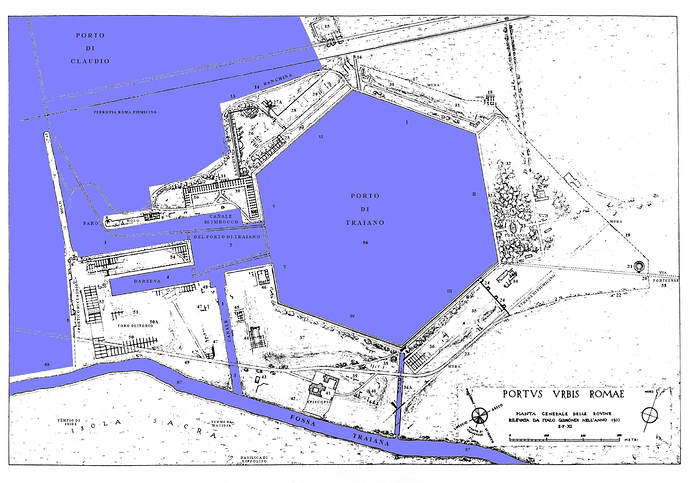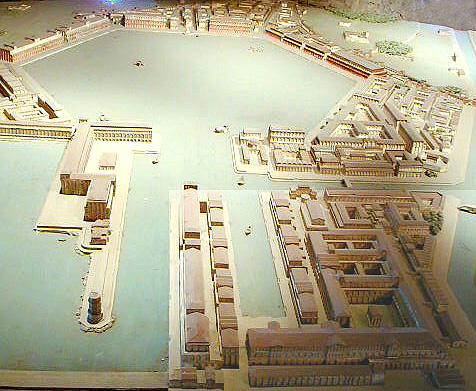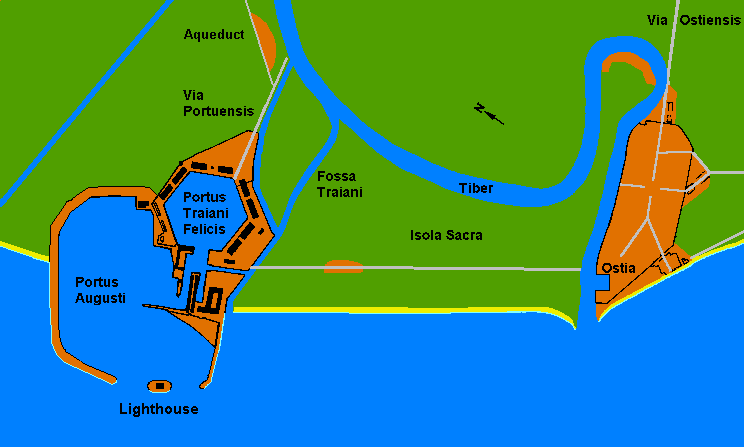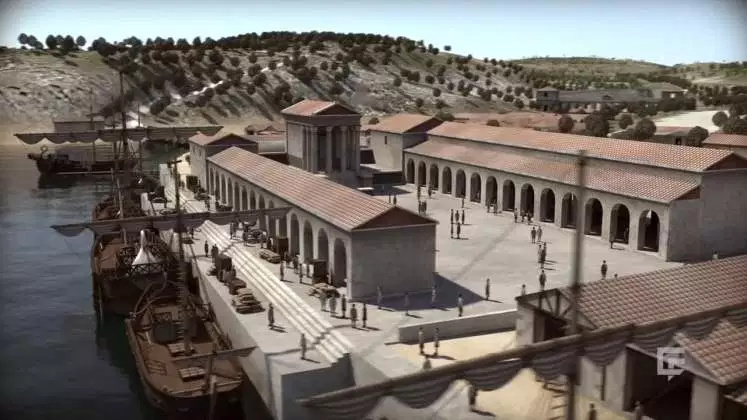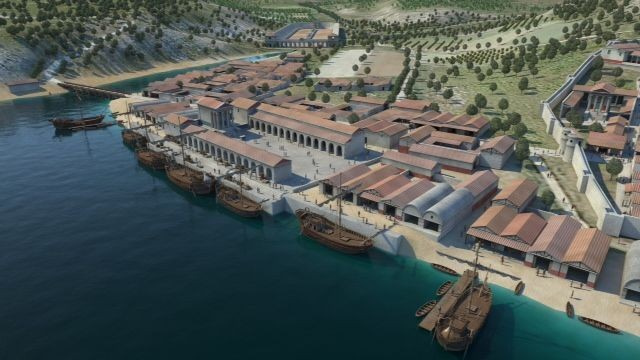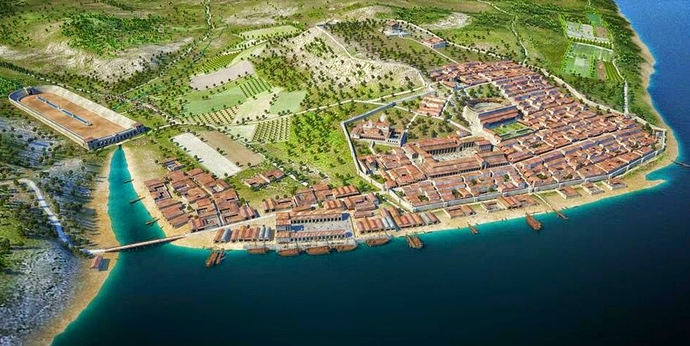Hello everyone. Lately, I’ve been pretty cloistered writing my master’s thesis on Ports’ defensive devices during Roman antiquity, but it obviously hasn’t kept me from thinking about AC. As I’ve been neck deep inside port/harbour problematics, and obviously at some point, AC is going to have us play coastal cities with a functioning harbour, I thought I’d take my chance by suggesting things to implement concerning this particular topic in which I’m quite comfortable with. I’ll try to keep this short and as interesting as possible.
A brief History : historic ports in gaming
I’ve gathered some examples. Here is my opinion on them.
The worst harbour building mechanics I have been confronted to were the ones in Grand Ages: Rome, in Spanish Imperium Civitas III (Haemimont Games). Buildings that interact with the sea are bound to predefined locations, signified by wooden piers:
The objective here is mostly to limitate the number of commercial routes you can maintain, as they are pretty overpowered (and there’s no way to balance that in the way it’s designed). The port layout ends up being very unnatural and frustrating because of the enormous space the coastal emplacements take.
Three ports and a fishery. Notice how you can’t build near the fishery because of the predefined location nor near the ports because of the unevenness.
Sid Meier’s: CivCity Rome (FireFly Studios & Firaxis Games) proposes a different take on this matter. It feels more natural as you can effectively build an animated and credible shorefront, with trading posts, shipyards, shops. The principal flaw is the limitations brought by the buildings, which are square or rectangular shape and the area of effect of certain service buildings or shops that limits your building freedom.
Unloading the merchant vessel. Jobs are bound to buildings, and the port building has 2 different jobs: merchant and dock worker, which is quite accurate.
A “long” shorefront. See how you begin to notice buildings repeat themselves.
In my opinion, the top harbour design prize should awarded to Anno 1404 (Blue Byte & Related Designs).
The building mechanics feel totally different, and as a consequence the harbour feels like a different part of the city. You choose where you build quays, warehouses, defensive towers, shipyards, moles… The personalization tools are numerous and you can build very organic, satisfying, and functional port layouts.
(
Important precisions on what’s next: my research time frame concerns Rome from the Republic to the end of the Empire, but I’ve studied greek and punic ports as well. What I’ve been trying to do is to draw a wide picture, so let’s see if we can extract some AC game design from it.
The info I’m going to lay here is mostly destined to feed the discussion on the Bronze Age expansion and further epochs, but some things can be utilized for the Neolithic Middle East Expansion and even the original game, like this first point.
)
Coastline and town localization
Ports are meant to be a safe harbour (ironic isn’t it?) for boats, and there is a typology in harbour location. Ancient authors (Vitruvius, Philo of Byzantium…) have talked about the ideal port location, situated in a lagoon surrounded by hills. Obviously, many ports have been dug up presenting different features.
The main three location types would be the estuarine, lagoon area and open port. As AC is planned to be a platform, and that sea and coastal cities are an unlocked goal, I’d like to propose some insight about harbour siting (and therefore, what kind of environments the procedural map could generate). Here are some diagrams.
- The estuarine port. It facilitates the transit between the inland and the sea by river transport. It can be situated much more upstream and still send out boats to the sea. (examples: Rome, early Ostia)
2. The lagoon port. The most sheltered from winds and tides, it is easier to defend because of the reduced port entry (walls can be erected and the entrance guarded). The transit of commercial vessels is slower though. (examples: Carthago Nova, Alexandria)
3. The open port. The most basic one, undoubtedly the first type to appear. In later times, it favoritizes the rapidity of trade; it is easier to berth and leave port. (examples: Delos, Tarraco)
An important type I haven’t talked about is the cothon type port, which is completely artificial. Notable examples are Carthage’s, Ephesus’ and Phalasarna’s (![]() pretty ancient and very impressive port) ports : their basin is excavated. I’ll develop on them when we will know more about terraforming.
pretty ancient and very impressive port) ports : their basin is excavated. I’ll develop on them when we will know more about terraforming.
What does a port look like ?
I’ve tried to boil it down to the basics. A port isn’t necessarily some monumental structure, it can be a simple beach. The port in itself is more of an organization, we’ll get to it. For now, I’ll just say that it is such a complex matter that it can be as enticing as building/managing the city. But for now, let’s see how the player could interact with the sea.
Level 0. (Eastern) Neolithic
The level 0 can effectively be considered as a port, as it is the location used as an interface between the sea and the land. It consists of a simple beach, where boats are pulled ashore. Of course, the nearby buildings will be linked to port activity, like warehouses for example.
Level 1. Mediterranean Bronze Age
The land has been level out by a stone quay. It looks more evolved, and could (ideas thrown on the table here) increase the capacity of the port’s warehouses and allow taxing and the true regulation of commercial trafficking by the player. The vessels are still pulled ashore on a beach.
Level 2. Iron age, Phoenician/Punic influence.
The beach is no more as the quay takes all of the shorefront. The boats can dock easily and loading and unloading is facilitated.
Level 3. Greeks, romans.
This is the most advanced constructed ancient port. The vessels are safe from winds, tides, and raiders inside a basin delimited by moles (≈ breakwaters) made in stone and later cement. More quays mean more boats capacity, so it could attract more trade, give a bonus in prestige… Walls can be built on top of the moles, and towers could guard the entrance, even close it with a chain or a boom (≈ wooden chain). In closed ports like this one, it is fairly possible to see them berth in the middle of the basin and the loading and unloading made progressively by much smaller vessels (this might be exclusively roman though).
What are the port’s functions ?
NB: my knowledge applies to roman and greek ports, hence some things might be imprecise or straight up wrong for earlier periods. Still, I’ve tried to sort out what could be applied to Bronze Age (and posterior) ports.
A port is not only a place where boats can berth, it is also an authority (independent of the city) that
- controls who enters/leaves docks at the port
- conducts quality assurance tests on goods
- ensures the security of workers and travelers (harbour militia)
And, later (greek/roman period), - has a particular court to settle port-related disputes
- insures the boats docked in the port (there have been cases of insurance scam where captains would sink their boat to get the insurance money)
Therefore, the port has a ruling authority, who sits at a building in the port district.
The port district houses lots of different services, often specialized in port matters. Here are some meaningful examples: banks, temples, courts, shipyards, resupplying.
Here is a classification of the buildings a port can have.
Deals can occur in/near the warehouses between the transporter (owner of the ship), the merchant (who buys and sells during his journeys) and the wholesaler (who is affiliated to the port).
In the shipsheds either public workers can work to build a military fleet or private individuals to build merchant vessels…
I believe I’ve laid down all the fundamental information on Ancient ports I can. Hopefully this come in handy in later stages of development, sorry for posting it so early and being so roman-centric, hope it is all ok… I just feared it escaped my train of thought is all ![]()
I’ll come back with precisions later though, this is only a general panorama on what can be expected concerning Ancient ports. More precise research will be done. Thank you for your attention, and I’ll end this post by posting some images on exclusively Bronze Age ports ![]()
A fanciful recreation of Troy and its double port, a dug out (cothon) estuarine port AND and open port. Notice however how scarce the buildings are and that the port is quite far from the town
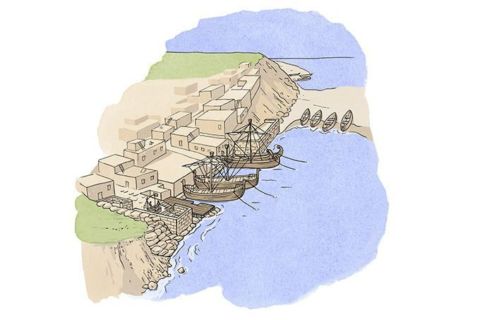
Late Bronze Age port. Looks pretty eastern mediterranean
The ship procession fresco, Akrotiri (Greece). 2000 BC - 1500 BC. This one is very graphic and interesting. Will come back to it!

